Spirali
Spirali is a long-form generative art algorithm
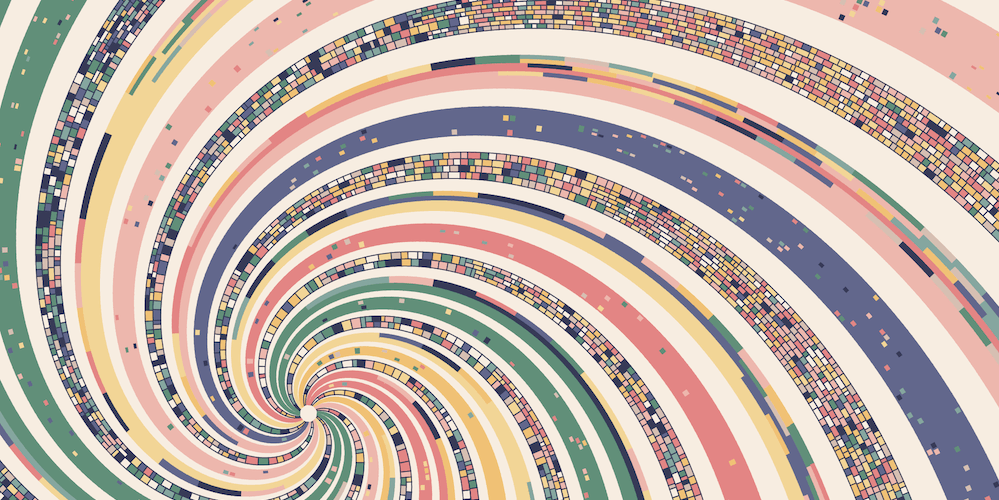
Important information
Spirali was minted on fxhash in Sept. 21st, 2022 and it can accessed here. Please, be aware that the use of Chrome browser is strongly recommended for this project! For more information, please see the FAQ.
Inspiration
Spirali was inspired by Tyler Hobbs' work with flow fields. However, instead of selecting random starting points for each shape to be drawn, which is more usual in flow fields works, I wanted to constrain the starting points to certain positions so that the shape being drawn could expand freely without the risk of colliding with other shapes, that's when I got to the spiral flow field.
Why Spirali?
The name of this collection is not only a direct translation of spirals in Italian, but it is also related to Italian cuisine and my own personal experience in Italy. The relationship with Italian cuisine is due to the immense number of types of pasta that exist, including one called spirali. When I was a child I only knew three or four types of pasta, but when I became a bit older I was amazed to learn that there were many more. Actually, there are hundreds. Just like from the same type of basic dough, you can make hundreds of types of pasta, my idea was, from just one type of spiral flow field, to make hundreds of images. A strategy of forcing creativity by imposing a major constraint.
The name of this collection also relates to my personal experience because it was visiting Italy many years ago that I first became interested in art and design because of the beautiful buildings, churches and works of art that I came across.
Design strategy
A spirali is made up of several tails and each tail is made up of a basic element, which I called slice. A tail may have from one to thousands slices. It is mainly the variation in the number of slices and how they are colored that creates the different tail styles in each spirali.
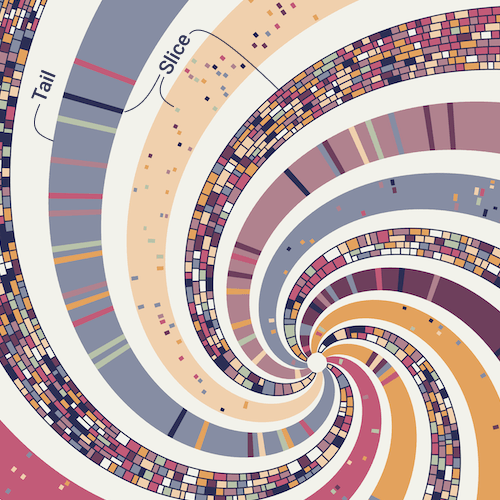
The slices start at the center of the spiral and in each iteration they grow a certain length or split in two depending on the parameters used in the algorithm, which also determine the outline and fill of each slice when it is rendered.
Features
The main features that a spirali can have are:
- Styles
- Refers to the drawing patterns of each tail, that means, the shape, fill and stroke of the slices that form the tail. There are about 16 possible styles from which the algorithm will choose about 3 for each spirali.
- Zoom out
- It is related to how much larger the flow field area is in comparison to the image area. There are two possibilities: 50% and 100%.
- Curvature
- An arbitrary measure of the rate the tails of a spirali are turning. A spirali can have high or low curvature.
- Rotation
- The rotation direction: clockwise or counterclockwise.
- Tails
- The number of tails in a spirali.
- Palette
- The palette's name. There are about 14 possible palettes.
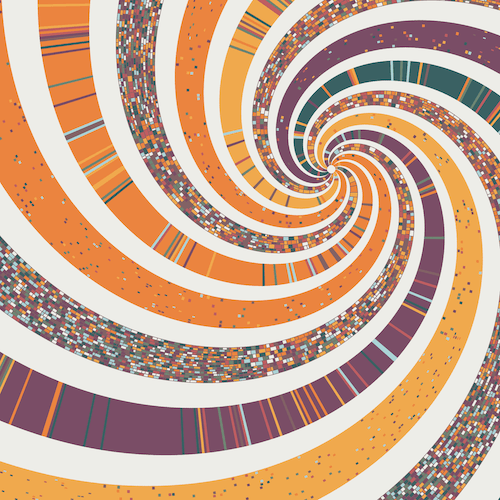
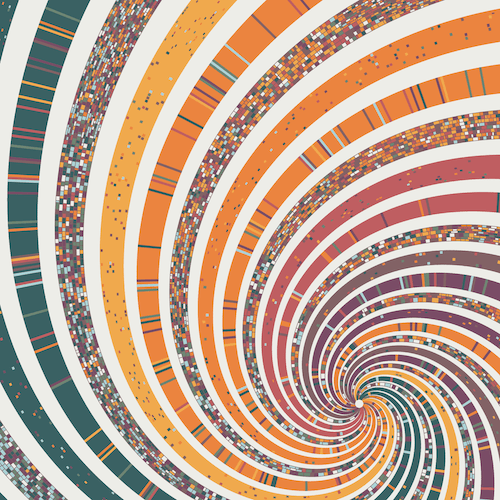
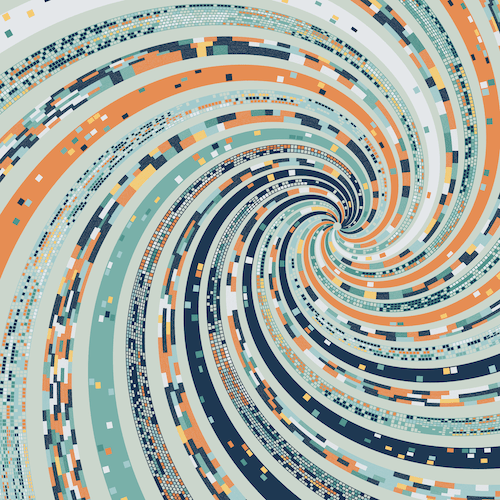
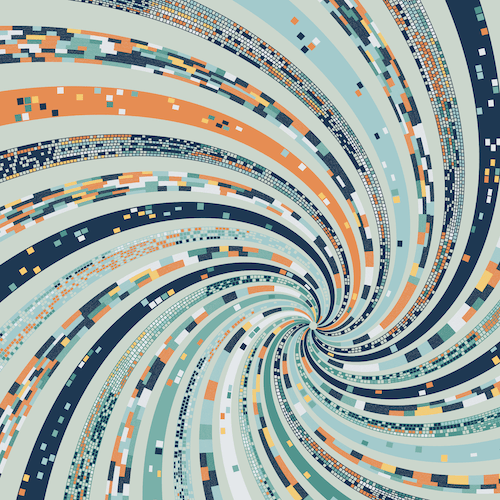
FAQ
1) Why is the use of Chrome browser strongly recommended for this project?
When a token (e.g. an item of a collection) is minted, fxhash generates a preview image which is attached to the token as an alternative way of viewing it. This preview image is fixed and will be the same for all users, regardless of the browser they use.
However, when there is a request to dynamically generate an image of a token (for example, to obtain a high resolution version of the image) the generated image may differ from preview if any browser other than Chrome is used. In fxhash, this request happens, for example, when clicking on the "reload" or "open" links on a item page. If Firefox or Safari browser is used, the generated image will normally be different from preview.
2) Was this project inspired by Tyler Hobbs' Fidenza collection?
You're probably expecting a yes, but the reality is a little more complicated than that. First of all I think it's important to say that I got to know the Tyler's work before Fidenza and I learned a lot from his essays. One of the things that struck me the most was a sentence in his flow fields essay that says the following: "It's entirely possible that I've used them (flow fields) in more programs than any other person alive." This perseverance, this pursuit to look at the same technique from a different perspective and always get something new out of it that was Spirali's true inspiration.
Certainly, Fidenza influenced me, but any similarity to it was unintentional. In fact, these similarities were more feared than sought. This project was only launched because I believe it has its own identity.
3) What do you think about the association of this project with Fidenza to promote it?
I think it's a bad idea and I wouldn't recommend anyone to do it. This is a different project, we have to let it has its own life.
4) What will be your next project?
I don't know yet, but I have some ideas. Anyway, this will probably take some months.